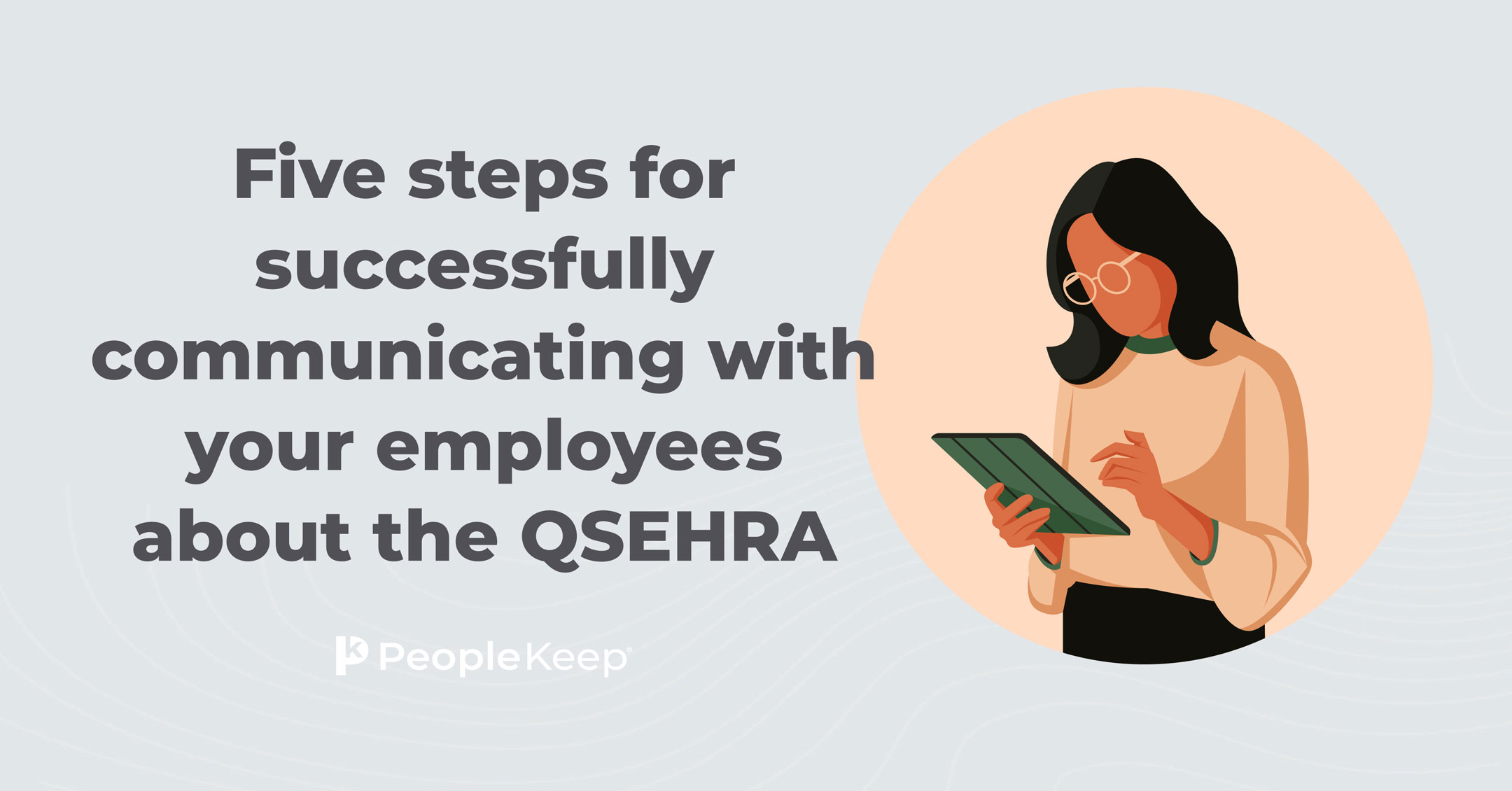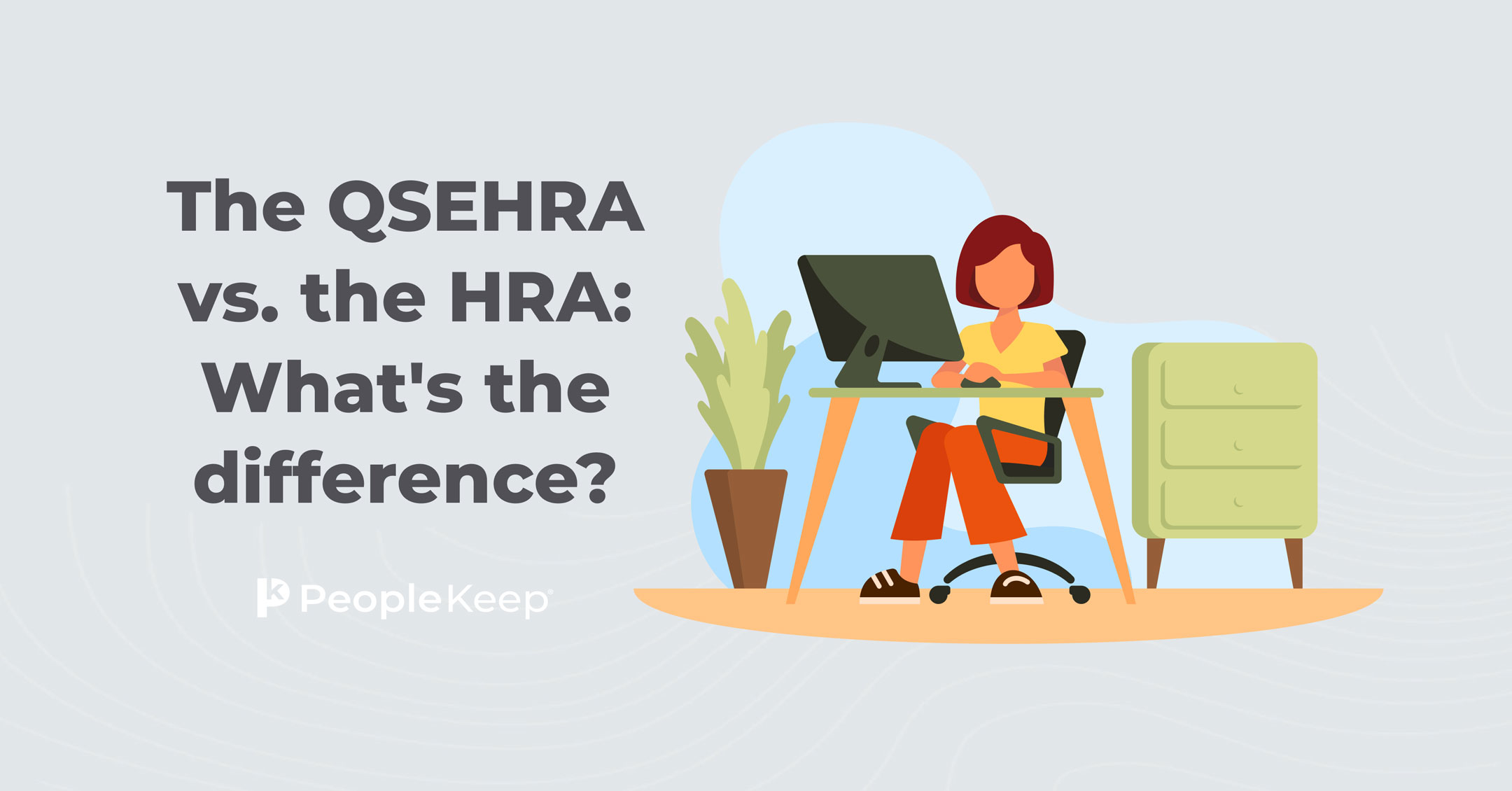Should I still offer the QSEHRA when group insurance is cheaper than individual?
By Holly Bengfort on September 30, 2025 at 7:30 AM
When it comes to providing health benefits for your employees, cost is always top of mind. If you’ve compared traditional group health insurance premiums with the price of individual health insurance plans, you might find that group coverage sometimes looks less expensive. While offering the qualified small employer health reimbursement arrangement (QSEHRA) in most places presents substantial savings to small businesses, that isn’t always the case.
So, if group insurance is cheaper than individual coverage in your area, is it still worth offering the QSEHRA in its place?
In this article, we'll explain why the QSEHRA may be the better choice for your organization.
In this blog post, you'll learn:
- The differences between a QSEHRA and a group health plan.
- Six ways the QSEHRA outperforms group coverage.
- How PeopleKeep can help you offer a QSEHRA.
What is the QSEHRA, and how does it work?
A QSEHRA is a type of health reimbursement arrangement (HRA) designed specifically for small employers. It allows organizations with fewer than 50 full-time equivalent employees (FTEs) to reimburse employees tax-free for the cost of their own individual health insurance premiums and more than 200 other qualified medical expenses.
Some qualified medical expenses include:
- Doctor visits
- Preventive care
- Emergency care
- Dental care
- Vision care
- Prescription drugs
- Over-the-counter medication
Instead of choosing and managing a group plan, employers set a monthly allowance. Employees then buy plans that provide minimum essential coverage (MEC), and you reimburse them for their premiums up to their allowance amount.
How the QSEHRA outperforms group coverage
While group coverage is the common choice for many employers, it isn't always the best option. Let's look at six ways the QSEHRA outperforms group coverage.
1. Employee choice and personalization
Even if group insurance premiums are lower overall, group plans are one-size-fits-all. Every employee gets the same plan with the same provider network, deductibles, and coverage levels.
With a QSEHRA, employees shop the individual market and choose the plan that works best for them and their families. That means more flexibility, especially for employees who may already be seeing certain doctors or need specific prescription coverage.
2. Cost
Group health insurance is expensive. According to KFF1, the average annual premiums for employer-sponsored health insurance were $8,951 for single coverage and $25,572 for family coverage in 2024. The average single premium increased by 6% and the average family premium increased by 7% compared to 2023.
In contrast, you have the flexibility to set allowance amounts according to your budget with the QSEHRA. Small employers offered their employees an average monthly QSEHRA allowance of $442 in 2024, according to PeopleKeep's 2025 QSEHRA Report.
3. Predictability
With group insurance, premiums rise annually, leaving small employers with little control. A PwC survey2 found that medical costs will rise 8.5% for group plans in 2026, the same as in 2025.
However, group plans are experience-rated. That means that your employees’ benefits usage can drive up premium costs. If even one or two of your employees have substantial claims, it can cause a steep rate increase for the following year. Thankfully, individual health plans are community-rated. This means your employees’ claims don’t impact their premium costs.
You don't have to worry about annual rate hikes with the QSEHRA. Since you set a fixed monthly allowance for each employee, you can predict and control your benefits budget with no surprises at renewal time. Even if individual plan rates rise (and they tend to be more modest in comparison to group rates), your contribution stays the same unless you choose to adjust it.
4. Administrative simplicity
Managing a group health plan requires dealing with renewals, COBRA, and compliance tasks.
By comparison, a QSEHRA is much easier to administer. Employers reimburse employees tax-free for the premiums and medical expenses they choose, and a benefits administrator, like PeopleKeep, handles the compliance details for you.
We simplify offering an HRA by taking care of everything from generating plan documents to reviewing employee reimbursement requests. Plus, your employees can shop for health insurance directly from their PeopleKeep dashboard.
5. Coverage for all employees
Group plans often come with a 70% participation requirement. If you can’t meet the minimum percentage of employees who enroll, you might not qualify to offer the plan.
The QSEHRA has no participation requirements. Whether you have two employees or 20, everyone with a qualifying health plan can receive a tax-free allowance. Employees are even able to participate if they’re covered under a spouse’s or parent’s plan with MEC.
6. Sustainability
Even when group insurance looks cheaper at first glance, it may not stay that way. Premiums can rise quickly, and switching plans year after year can cause frustration for employees.
The QSEHRA offers a sustainable path forward, with stable employer costs and employee choice. Over time, this often creates more satisfaction for both employers and employees.
QSEHRA vs. Group health insurance
Here's a side-by-side comparison of the QSEHRA and a group health insurance plan.
|
QSEHRA |
Group health insurance |
|
|
Employer cost |
Employers set a fixed monthly allowance. |
Premiums vary by carrier and can increase each year. |
|
Employee choice |
Employees choose individual plans that fit their needs. |
One-size-fits-all plan. |
|
Participation requirements |
None. All eligible employees can receive reimbursements if they have plans that provide MEC. You can offer a QSEHRA even if you have only one employee. |
Must meet minimum participation requirements to qualify. |
|
Administration |
Simple. Employers reimburse employees tax-free. A QSERHA administrator, like PeopleKeep, handles compliance. |
More complex. Requires ongoing management, renewals, and COBRA compliance. |
|
Portability |
Employees keep their individual coverage if they leave the company. |
Employees lose coverage when they leave voluntarily. |
|
Sustainability |
Employer costs remain steady and flexible over time. |
Premiums typically increase each year. |
|
Employee satisfaction |
High. Employees have flexibility and control over their plans. |
Depends on how well the group plan meets everyone’s needs. |
Conclusion
Cheaper premiums don’t always mean better value. Group insurance might seem more cost-effective upfront. However, the QSEHRA provides flexibility, predictable costs, and a sustainable way to support your employees’ health needs.
If your goal is to balance cost control with employee satisfaction, the QSEHRA may still be the better fit, even when group insurance appears less expensive. Schedule a call with one of our HRA specialists to learn more about how the QSEHRA can benefit your organization.
This blog post was originally published on June 12, 2017. It was last updated on September 30, 2025.
Check out more resources
See these related articles

5 steps for successfully communicating with your employees about the QSEHRA
Need help communicating your QSEHRA notice to employees? This guide provides five steps to communicate the benefits and requirements of the QSEHRA.

The QSEHRA vs. the HRA: What's the difference?
Confused about the difference between an HRA and a QSEHRA? This guide explains how a QSEHRA compares to other types of HRAs.

5 steps to a successful QSEHRA launch
Ready to launch a QSEHRA plan for your employees? Follow these 5 simple steps for a successful implementation and ensure compliance!



